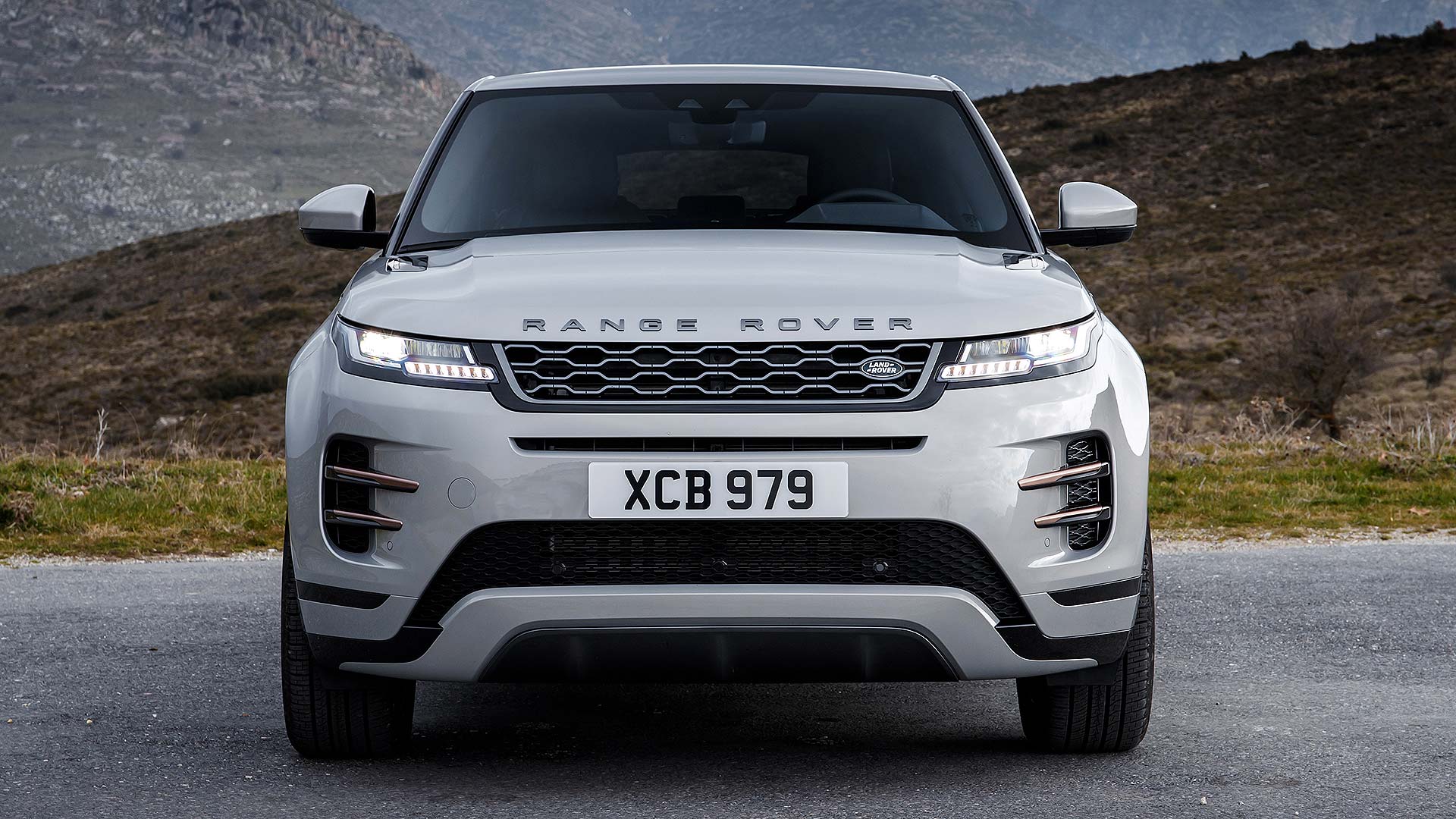 The Range Rover Evoque was launched in 2011, with the help of Victoria Beckham. Nearly 800,000 sales and over 200 awards later, there’s an all-new one for 2019. And, as the saying goes, if it ain’t broke…
The Range Rover Evoque was launched in 2011, with the help of Victoria Beckham. Nearly 800,000 sales and over 200 awards later, there’s an all-new one for 2019. And, as the saying goes, if it ain’t broke…
But don’t be fooled by the (successful, to our eyes) styling evolution. Underneath, the Evoque is all-new, and inside it’s a revelation. The car that was born as a Land Rover concept has become more authentically Range Rover than ever.
It feels more luxurious, drives with more composure, rides more smoothly and, apart from engines that are a bit noisy when revved, generates less noise at speed. At times, its comfort is extraordinary, while the interior is a triumph. Space may not be class-leading, but it’s no longer cramped, unlike its predecessor.
With prices starting from £31,600 (or, realistically, just under £36,000 for one with the must-have automatic gearbox and all-wheel drive), and with staggering used values helping keep monthly PCP payments affordable, the Evoque seems well placed to build upon the success of the landmark original.
We attended the global launch event in Greece to carry out a first drive review. Here’s what we discovered.
Styling: distilling an icon
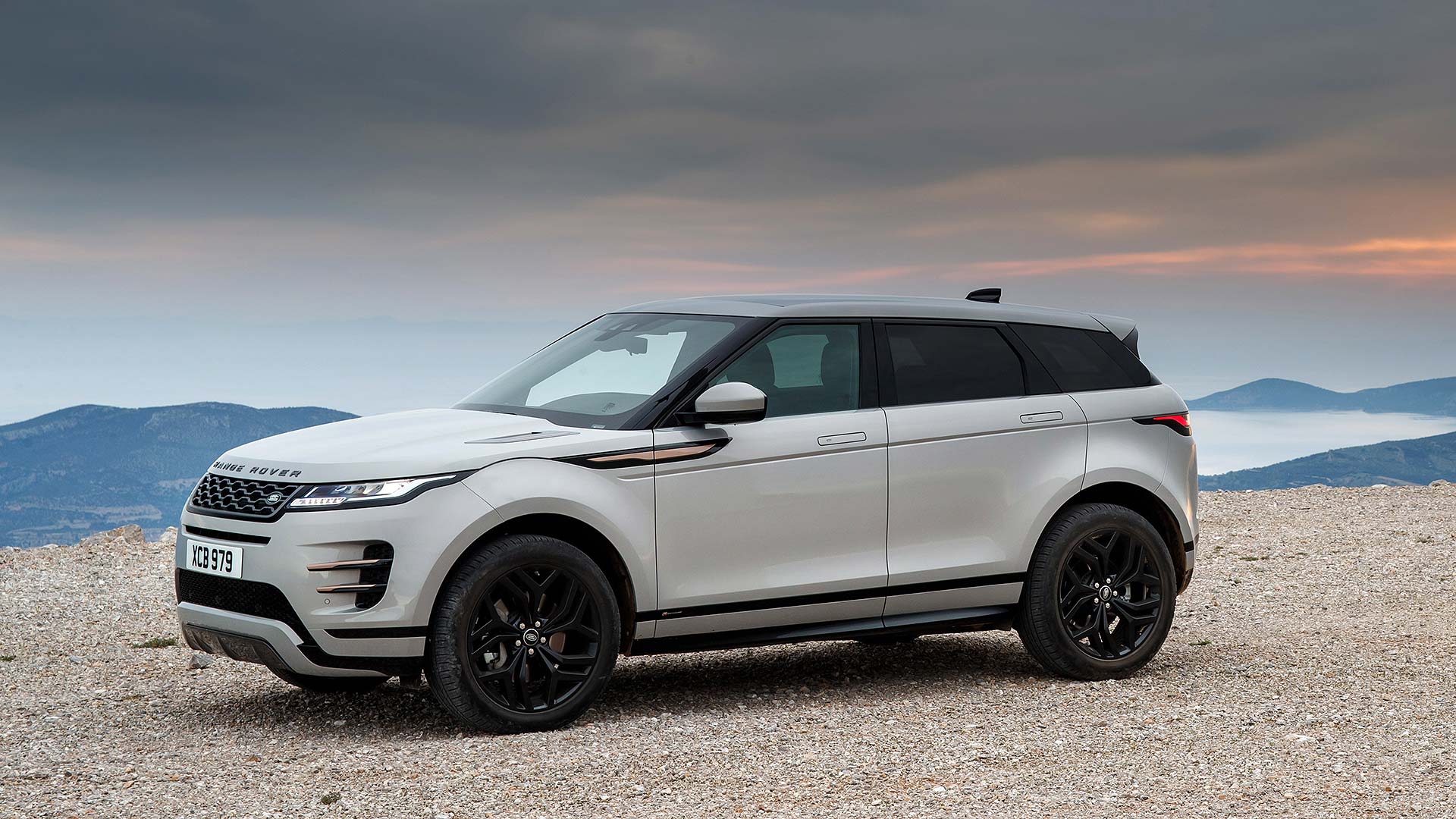
You don’t mess with icons. Exterior designer Massimo Frascella told us Land Rover did design a radical concept early on in creating the new Evoque, but it was soon dismissed. Customers clearly said one thing: keep it – but make it better. The design team agreed.
“So instead of changing a successful formula, we have reduced the clutter. It’s a refined evolution, giving the Evoque a modernist appearance.” Land Rover calls this reductionism, and the Evoque is the latest car to get this treatment, following the World Car Design award-winning Velar.
All in the details
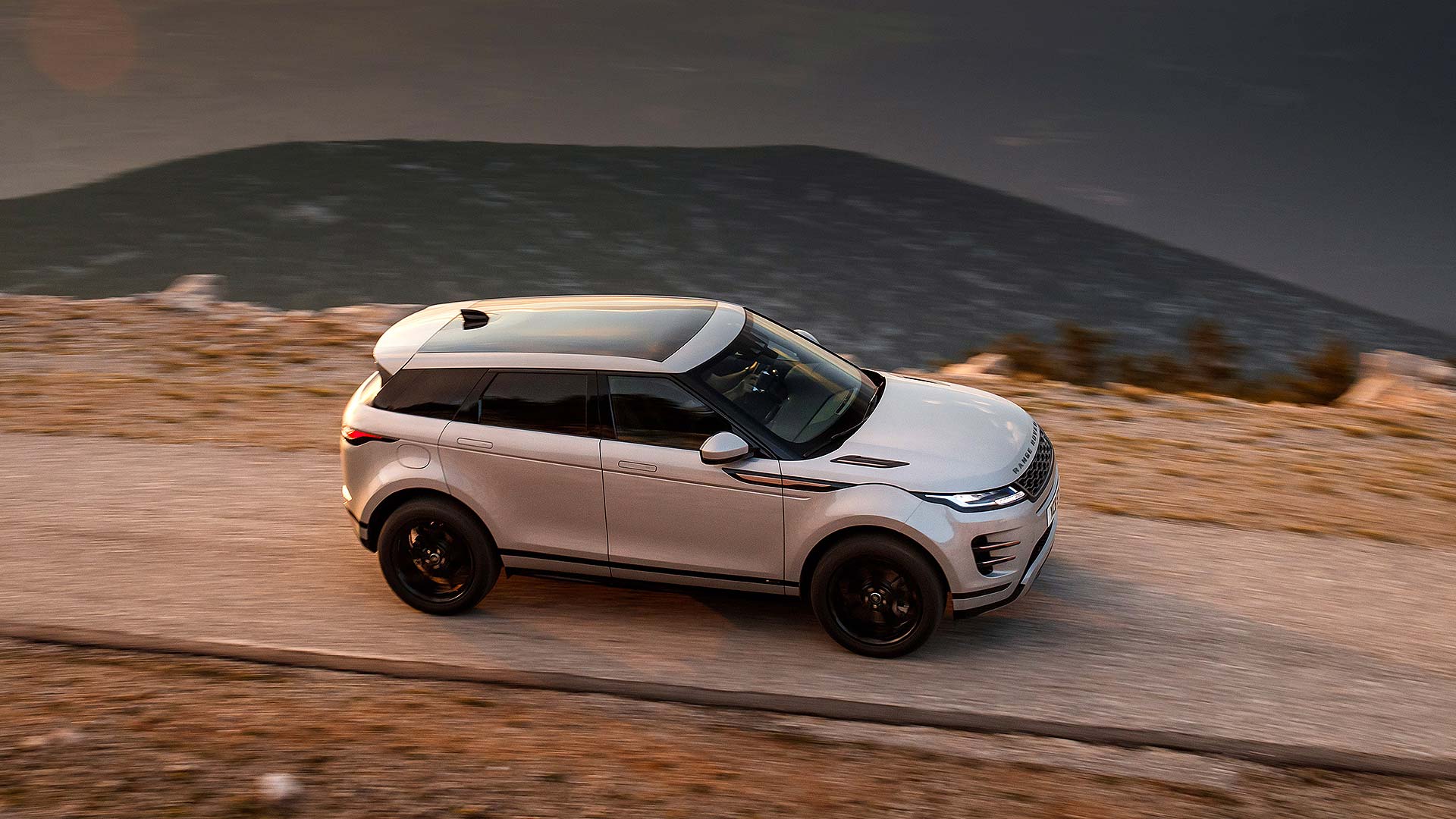
The side profile, with the rising waistline and plunging roofline sitting atop shallow windows, is 100 percent Evoque. It’s been tidied up; the black plastic wheelarch extensions have gone, for example, and the retractable door handles further help with decluttering. Marie Kondo will be in her element.
The quality of the paint is better as well, and shutlines have been narrowed by almost half. On the move, this has the effect of adding further sophistication – and, from some angles, makes the five-door Evoque appear not unlike the original three-door coupe.
Sizing up the Evoque
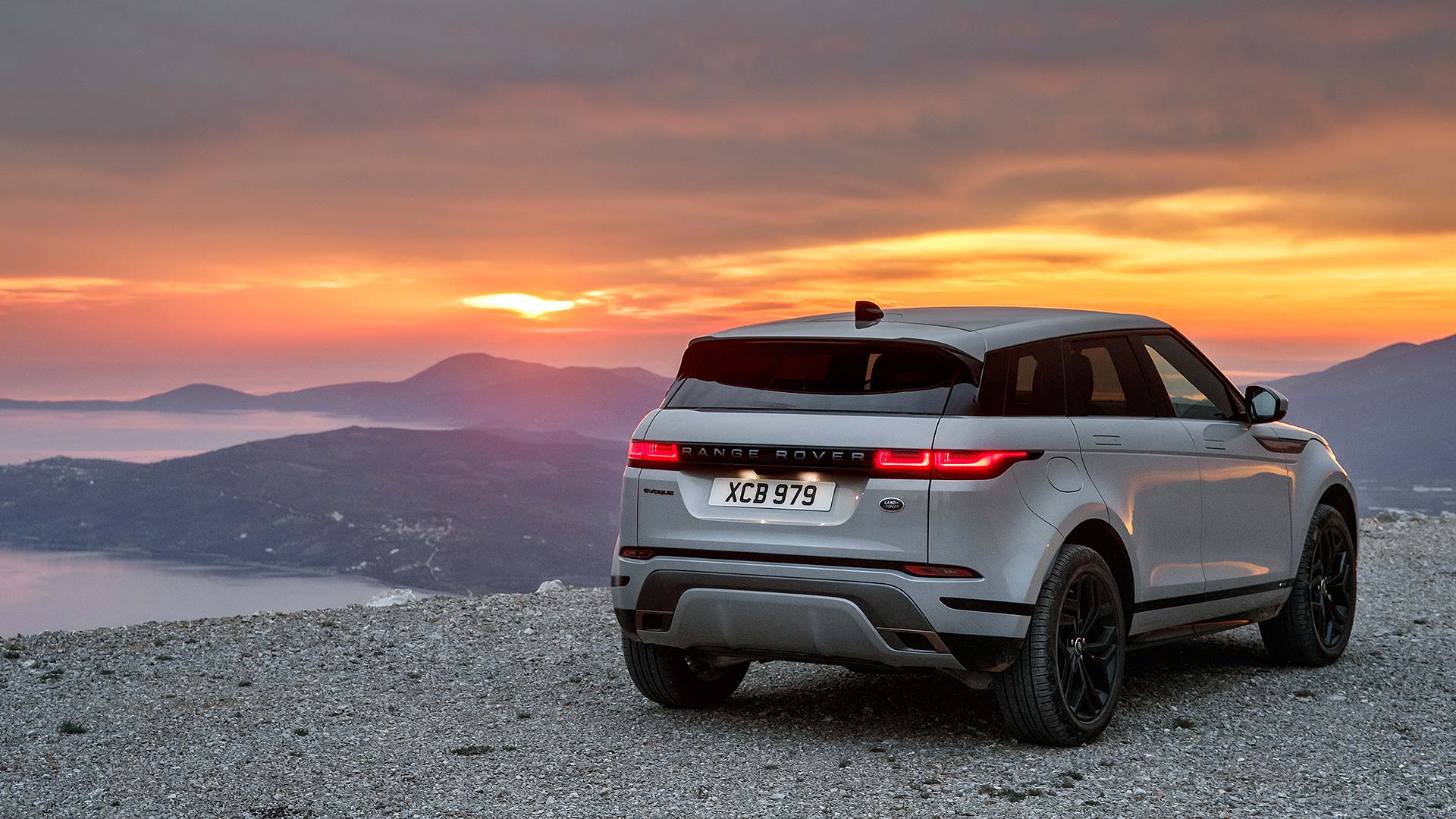
The Evoque is, intentionally, exactly the same relatively compact 4.37-metre size as the original. Customers insisted it shouldn’t grow; 70 percent of them drive mainly in urban areas. This was a challenge, particularly as more space was needed inside, and it also needed to meet more strict crash regulations.
“The length has actually grown slightly,” admitted chief engineer Pete Simpkins, “by 1mm. I’m still not quite sure how that extra millimetre crept in…”
Modernist painting
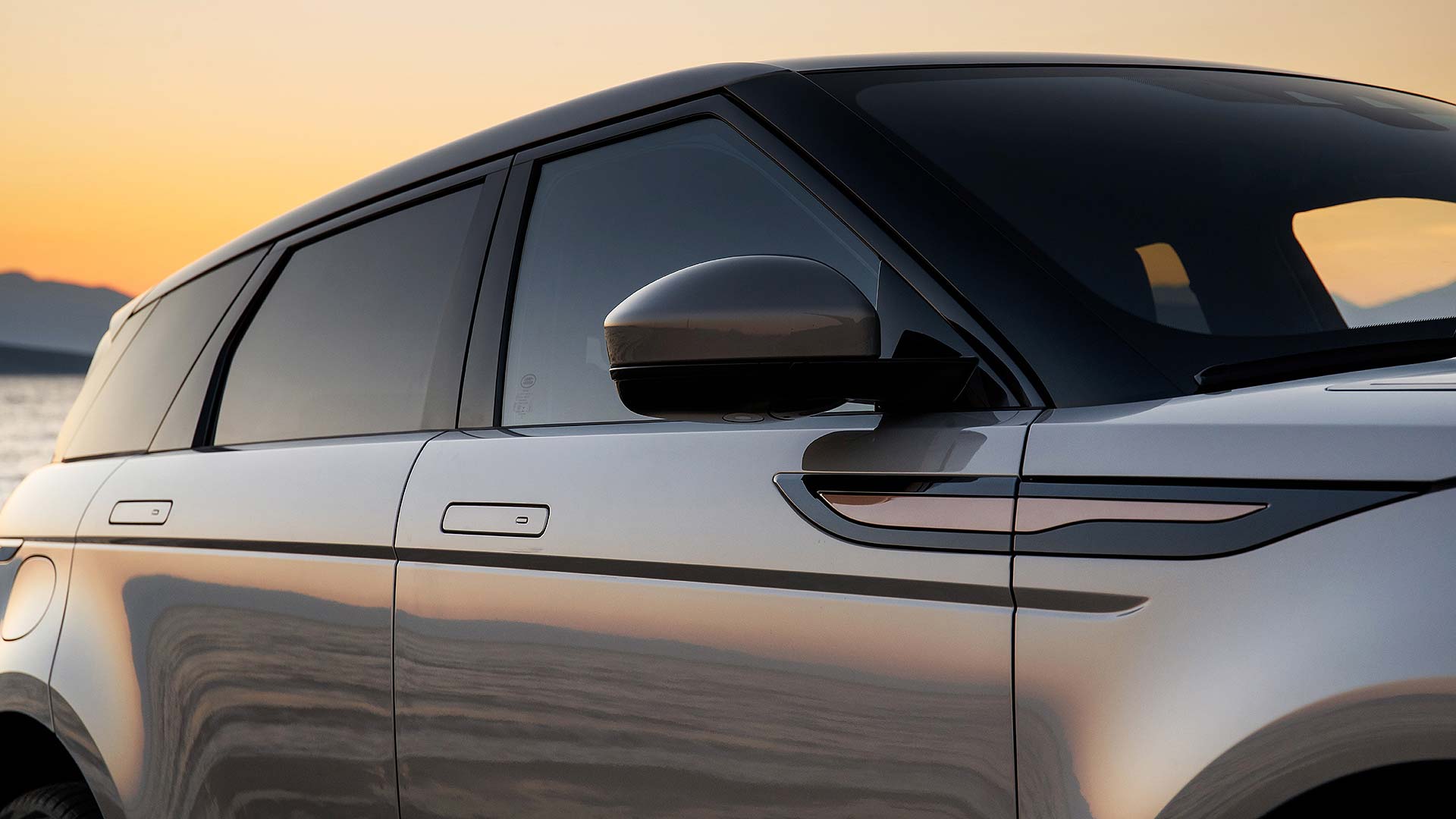
The original Evoque launched with a punchy choice of colours, including an eye-catching bright metallic green. The new one is more refined – it’s all variations of grey, white and black, with just a couple of colours including a punchy red. Frascella calls it a “more grown up palette, to complement the progressive design.”
Every Evoque gets ultra-slim LED headlights, and every variant is available with an R-Dynamic upgrade pack, for sportier looks outside and in. The bonnet vents that buyers so loved with the first Evoque are fitted to R-Dynamic cars; it’s thus expected to prove popular.
Open the door to a revelation
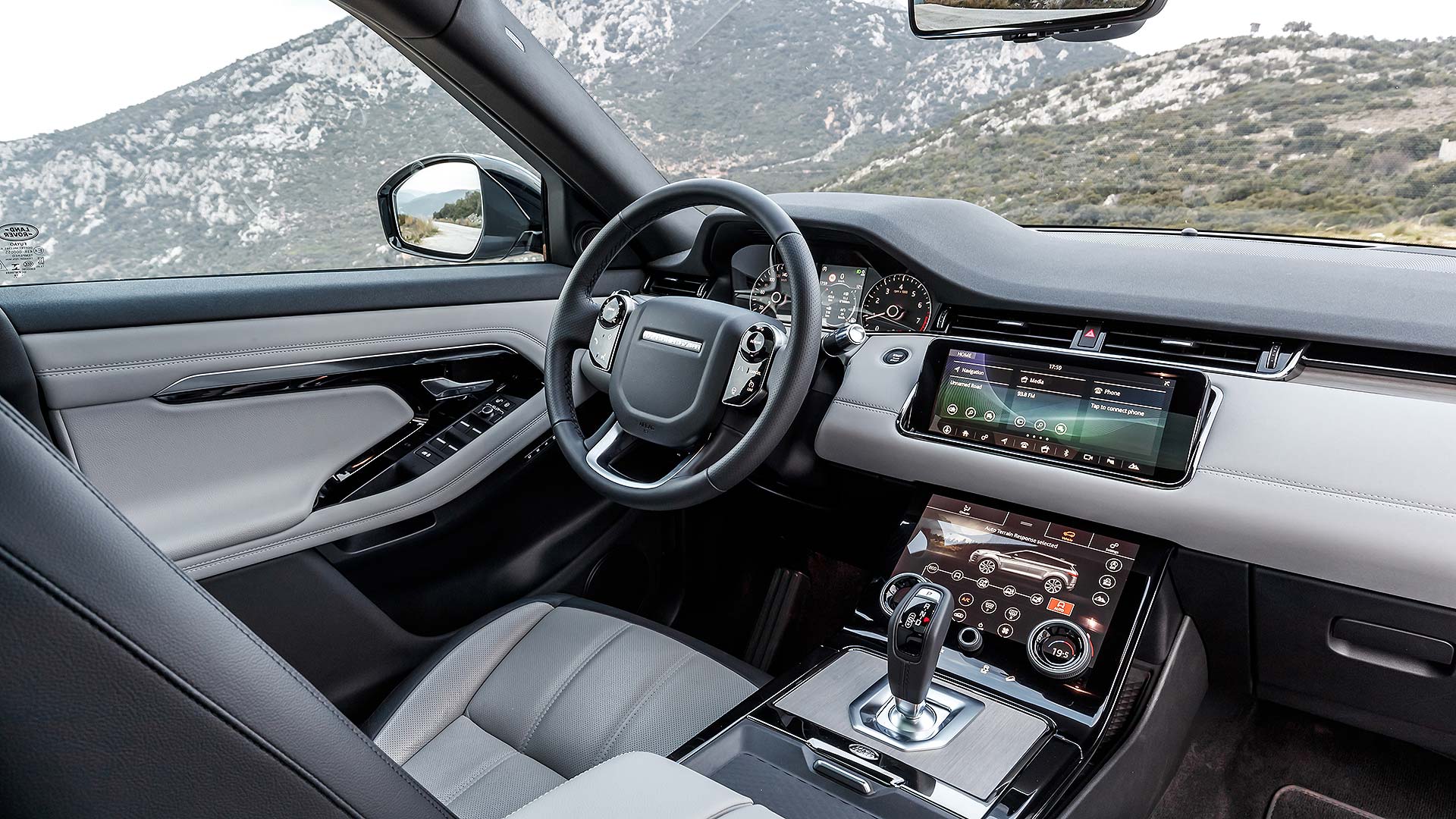
The interior of the new Evoque is superb. All the clutter and clumsy detail of before has been eradicated, with a clean new appearance and the twin-screen centre console first seen on the Range Rover Velar. “We wanted modernism, with a touch of glamour.”
It doesn’t just look immeasurably higher-end, it also feels it. Material quality has been upped to a level that now genuinely qualifies as premium. Owners of the old one won’t believe their eyes, or their fingertips.
Lounge-like luxury
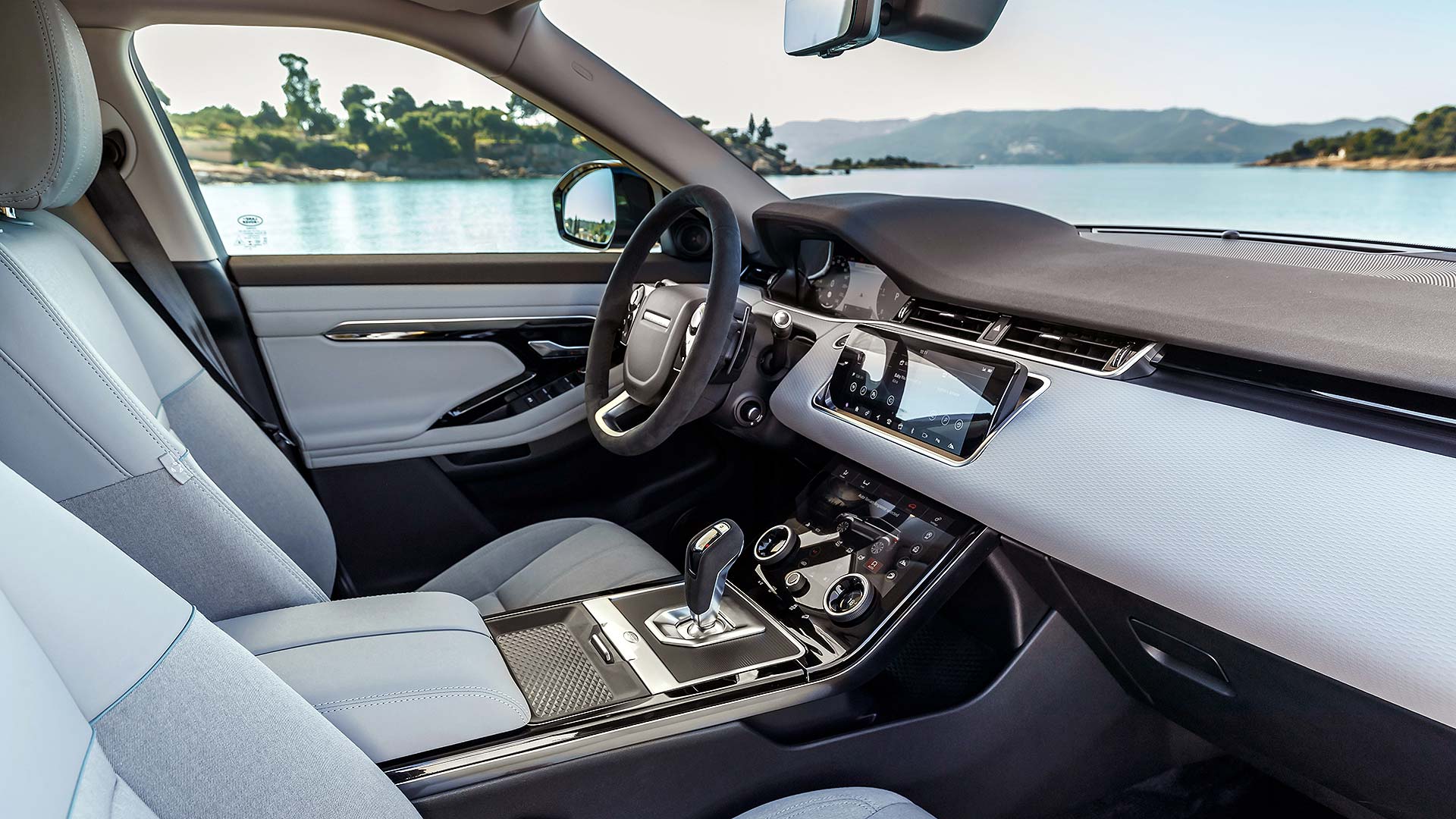
Frascella says the interior is about “reductionism, sophistication and refinement. It has a lounge-like feeling, one that’s calming and easy to read”. Seat comfort is improved (the rear hasn’t been overlooked here) and the centre console has grown; it doesn’t just have space for two cupholders, rather than one, it also has two individually-sliding armrests – just like you get on a bigger Range Rover.
A large, gently-dished steering wheel contrasts with the smaller, racier rims on so many modern cars, giving a more regal air. The pistol-grip gearshifter is a welcome sporty touch, mind. Taken from the Jaguar F-Type sports car, it replaces the past-its-best rotary shifter of the original.
An Evoque fit for vegans
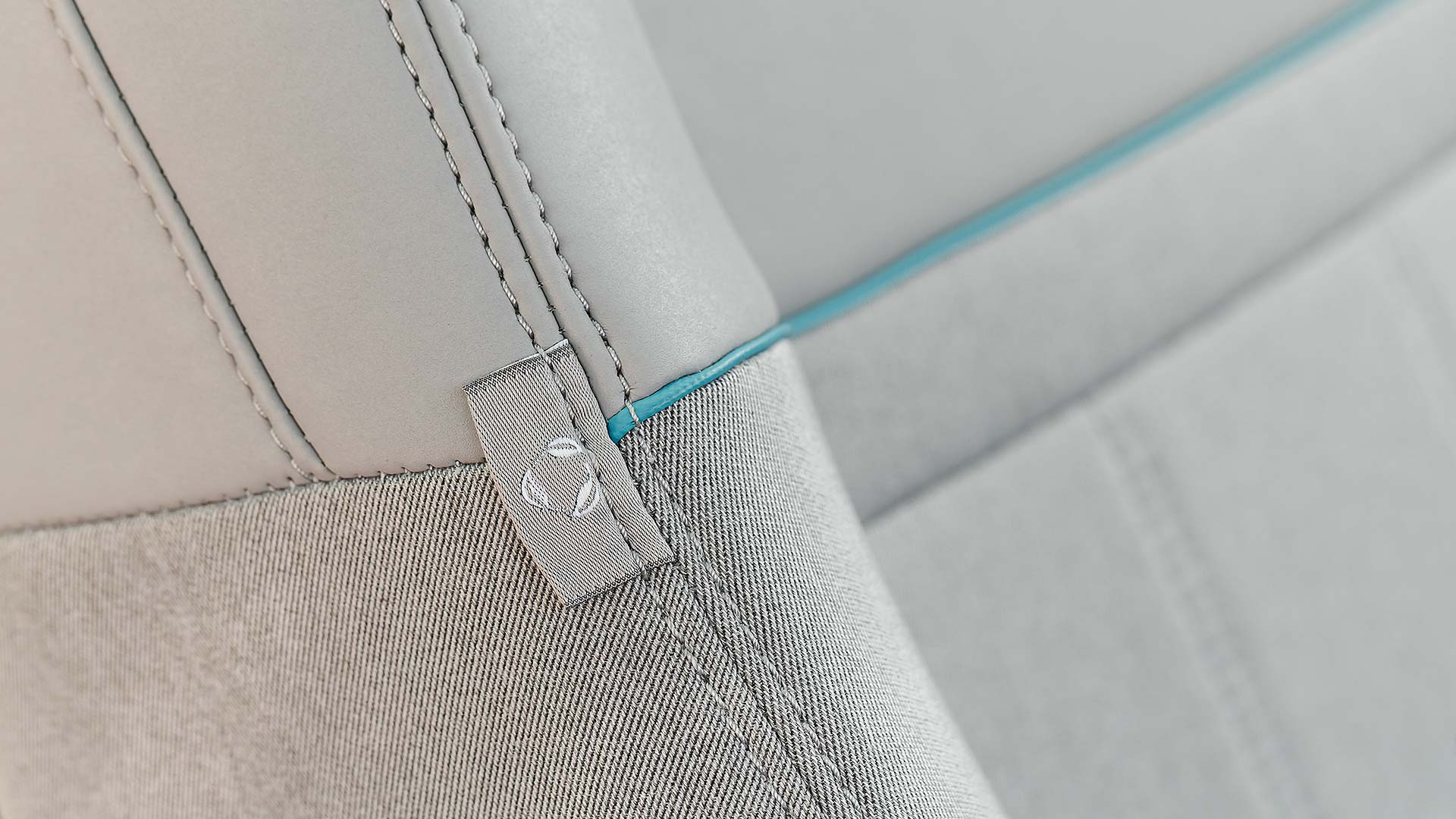
Frascella is a vegan and told us with relish that there are now two sustainable seat materials available in the Evoque. The high-end Kvadrat wool blend trim first seen on the Velar continues, in combination with Dinamica suedecloth, made from 53 recycled bottles’ worth of plastic per Evoque.
A more affordable option has been introduced as well. Eucalyptus and Ultrafabrics mixes a textile made from natural fibres alongside a material that is not derived from animals. Either makes the also-available leather seem rather old-fashioned; it’s there if you want it.
Practicality points
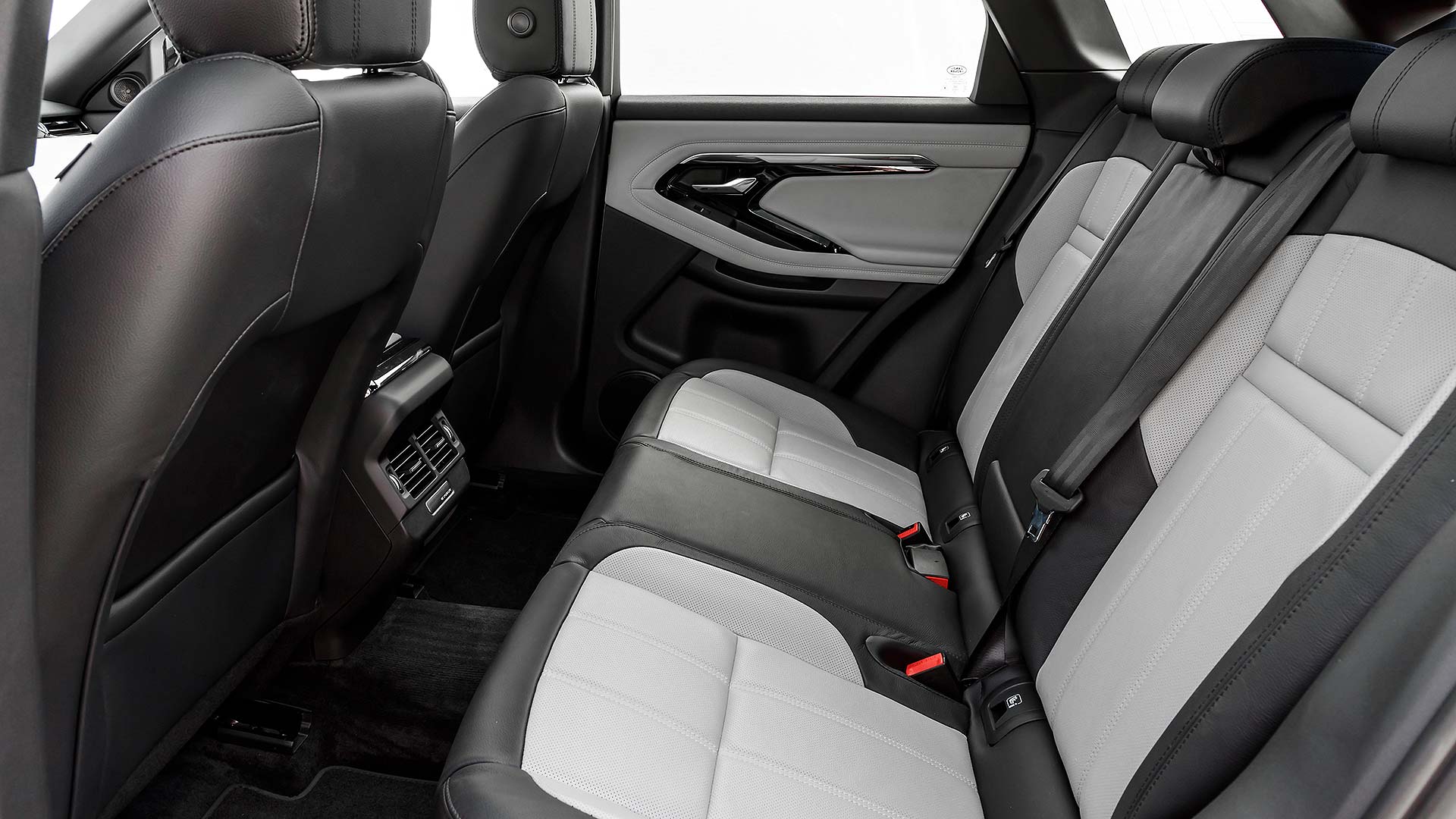
Rear space has been improved, and it’s easier to get in and out the back of the Evoque, too. There’s just about enough space under the front seats for adult-sized feet, kneeroom is better (it’s up 20mm) and there’s sufficient headroom even with the big panoramic glass roof.
It’s still not class-leading in there, but fewer will have cause for complaint, and it importantly feels less claustrophobic and hemmed in. The boot is 10 percent bigger, measuring 591 litres via Land Rover’s notoriously generous scale. Golf clubs now fit in sideways, as do two carry-on suitcases stored lengthways alongside one another.
Odds and iPads
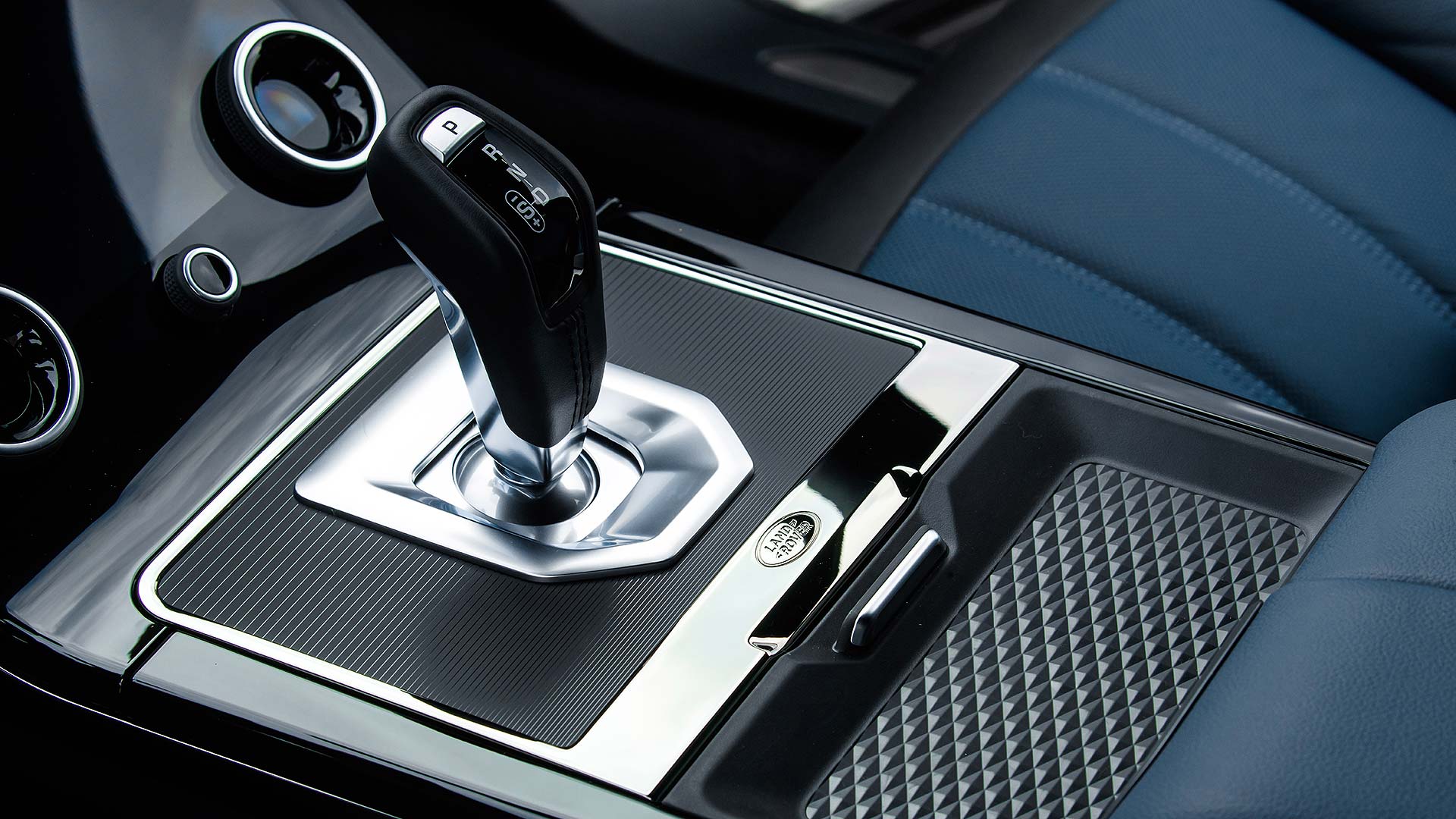
Current Evoque owners, rejoice. You can now get water bottles in the door bins. There’s a smartphone slot beneath the centre console (it’s actually big enough to store tablets). The centre cubby will also hold 4.5 litres – it’s much deeper than before.
All this has been achieved by stretching the wheelbase, which has also helped reduce the car’s overhangs – and, said Frascella, allowed bigger wheels to be optional. Launch cars were running on monster-looking 21-inch rims.
The drive: first impressions
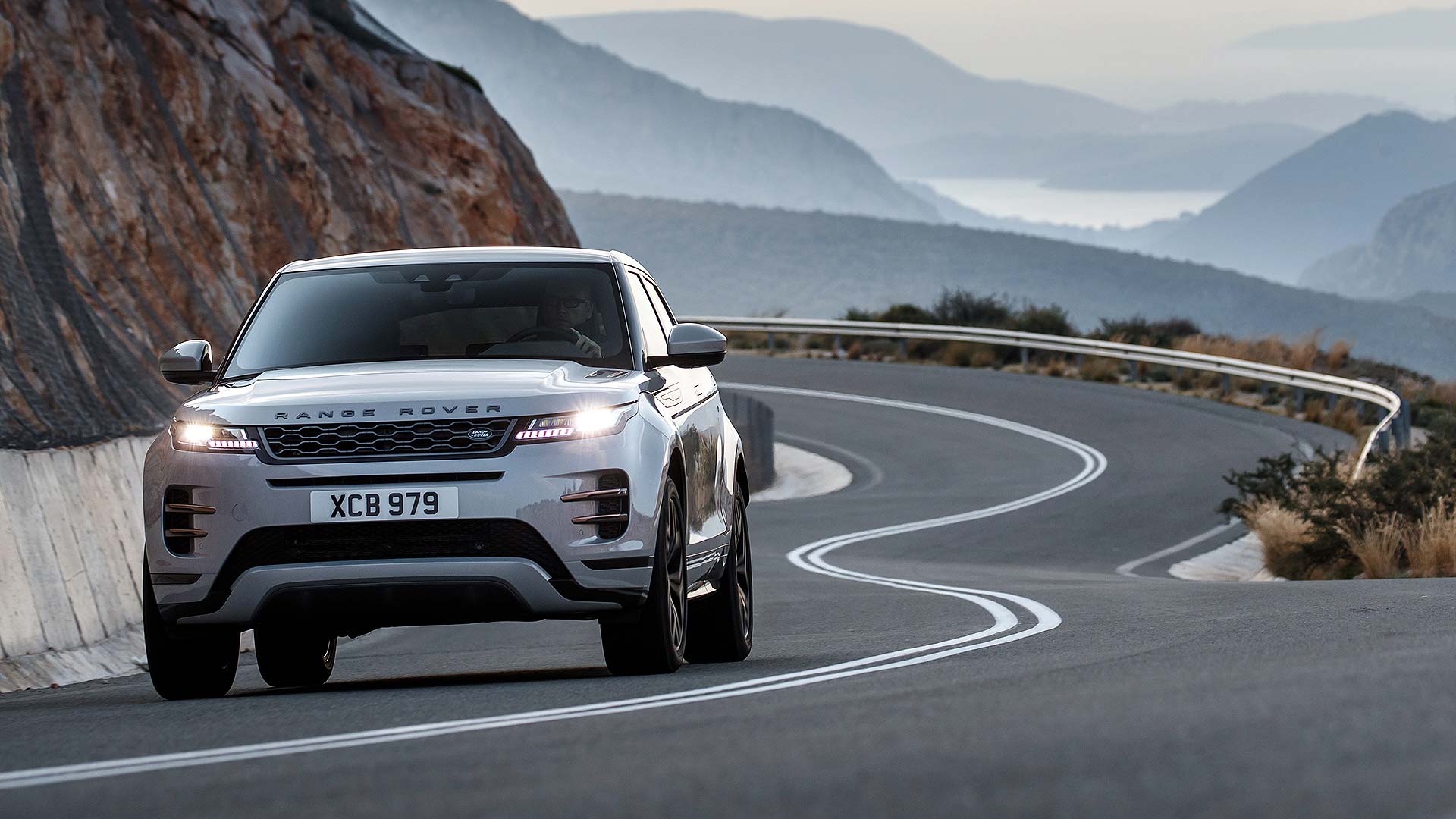
Apart from the lift in quality and visual appeal, the first thing you notice behind the wheel is how airier it feels. It’s lighter and brighter, and even though the rear pillars still look like a concept car, with the obvious impact on visibility, a clever ‘clearview’ mirror that doubles as a widescreen display helps eradicate blind-spots.
The above is best used in the city, however, as it made our eyes go a bit funny during faster driving, probably because they were having to refocus so much, so quickly. The jury’s still out, but it’s an interesting solution to a problem.
Despite sitting a bit lower and more ‘within’ the car than a big Range Rover – you can’t see as much of the bonnet and the base of the windows is higher – it’s still commanding and that large steering wheel, with fancy touch-sensitive controls, has a six-figure pricetag feel.
Ride revolution
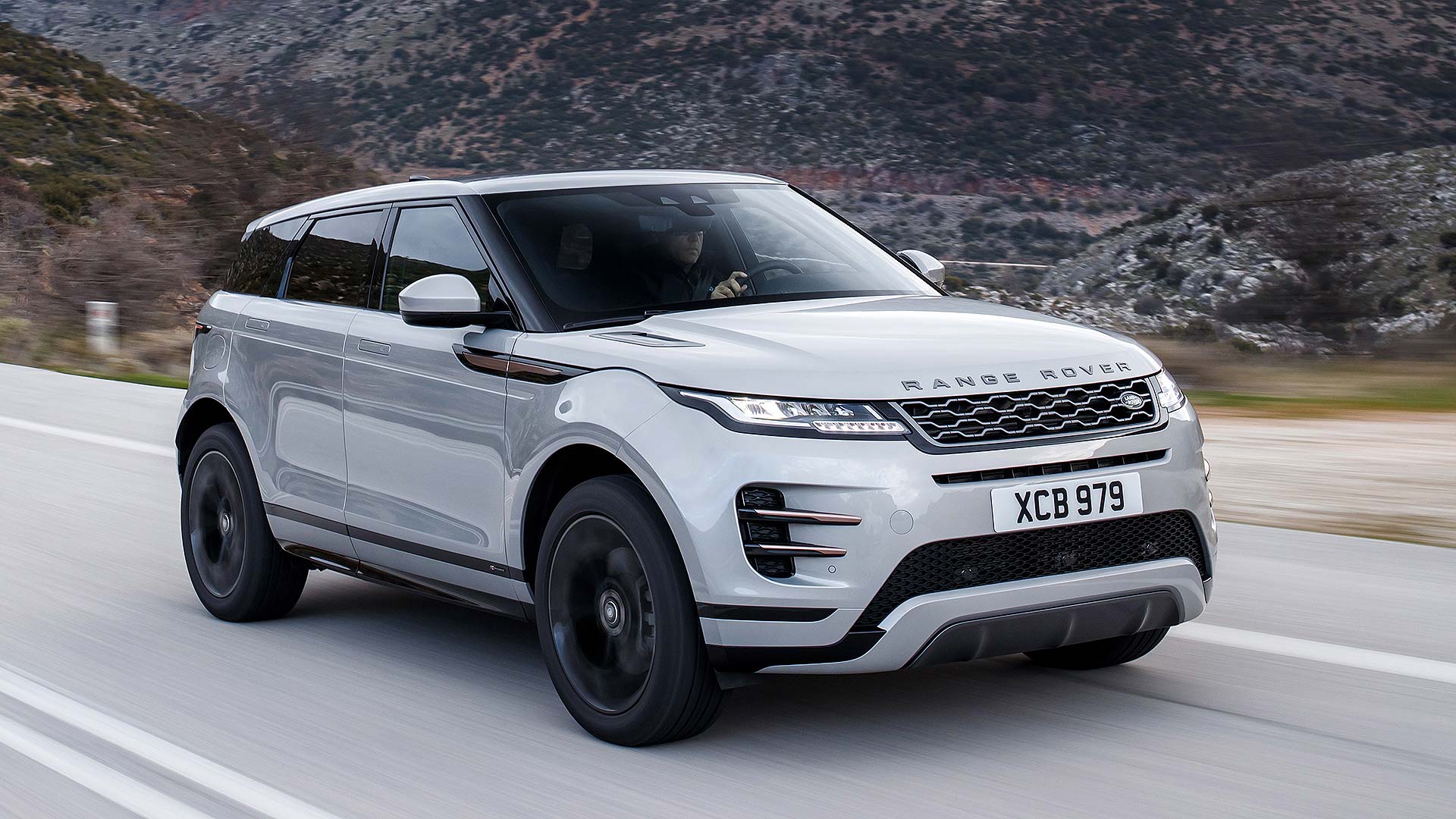
The uncanny smoothness of the ride quality in the new Evoque is eye-opening. You’ll feel this when you first drive through a big pothole – because you barely feel it. The crash-bang your body was bracing itself for doesn’t come; instead, it’s smoothed away almost entirely.
There’s less jiggly disturbance at speed as well, and the way it soaks up general disturbances with plenty of supple suspension travel is seriously impressive. Remember, the test cars were running 21-inch wheels, too. The optional Adaptive Dynamics suspension fitted to the test cars may have been a factor here. We’ll find out when we later drive cars with standard suspension.
48V mild hybrid tech for (almost) all
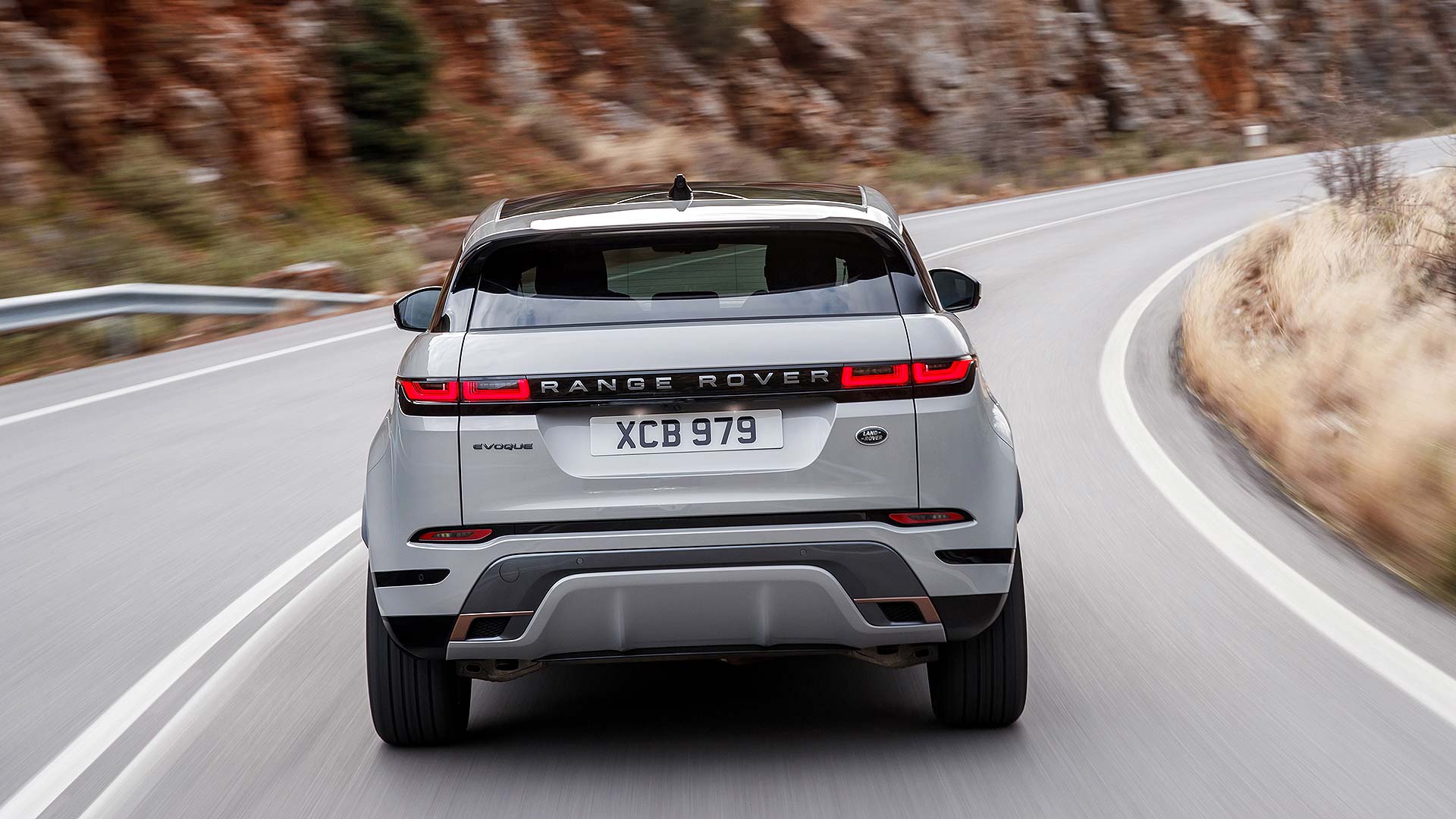
All automatic Evoques have a 48V mild hybrid system (only the base D150 manual lacks it). This stores energy recovered under braking in a lithium-ion battery; it’s sent to the engine when accelerating, for an ‘instantly on’ boost of pull that Land Rover calls torque filling.
It works imperceptibly, but very well. You notice it exiting hairpin bends – there’s surge available straight away, so the Evoque starts accelerating immediately, without waiting for the turbo boost to arrive. It also switches off the engine when rolling below 11mph, saving further fuel, and fires it up again instantly, rather than waiting for a starter motor to whirr.
Despite being measured on the strict new WLTP test, CO2 emissions are as low as 149g/km are attainable and fuel economy is up to 50mpg in the greenest guise. The mild hybrid system gives a six percent fuel economy improvement and cuts CO2 by eight percent.
Driving the petrol-powered Evoque
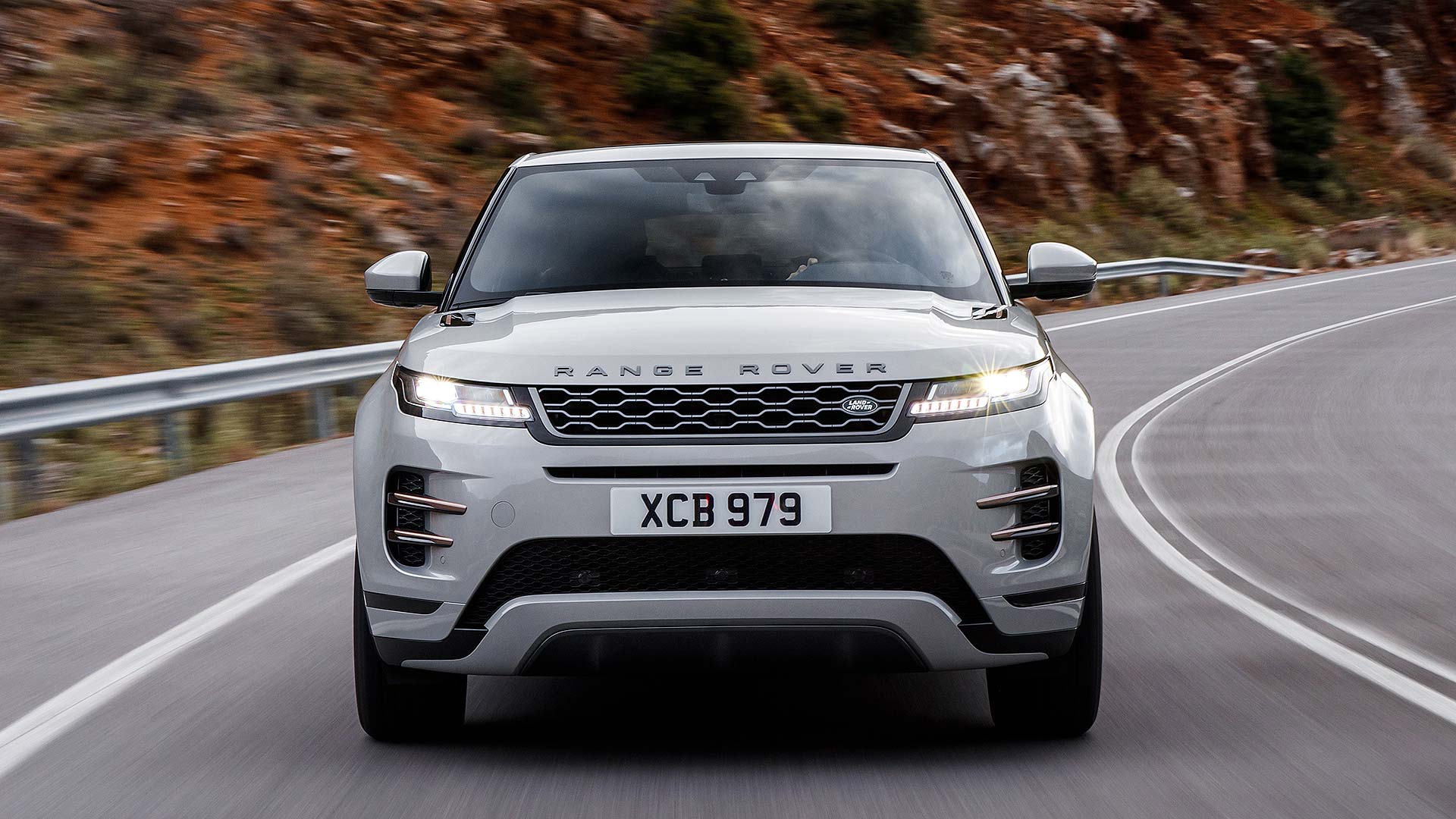
We drove the 250 horsepower petrol engine; a 200hp P200 is also offered, as is a top-spec 300hp P300. It’s a very smooth-revving engine, that doesn’t drone or vibrate, and feels nicely free-spinning. It’s vocal when revved, though, making a thrashy noise when you press on. A beefy kerbweight of more than 1,800kg means you need to work it, especially at higher speeds.
The nine-speed automatic gearbox doesn’t help either, by willingly changing down two or even three gears. It’s far less busy or indecisive than the flawed old-shape Evoque gearbox, but it sometimes does feel like it’s changing gear more than is strictly necessary, with the inevitable effect on cabin noise.
FAST FACTS: Range Rover Evoque P250 AWD Auto
- 0-62mph: 7.5 seconds
- Top speed: 143 mph
- Fuel economy: 35.8 mpg
- CO2: 180 g/km
Driving the diesel-powered Evoque
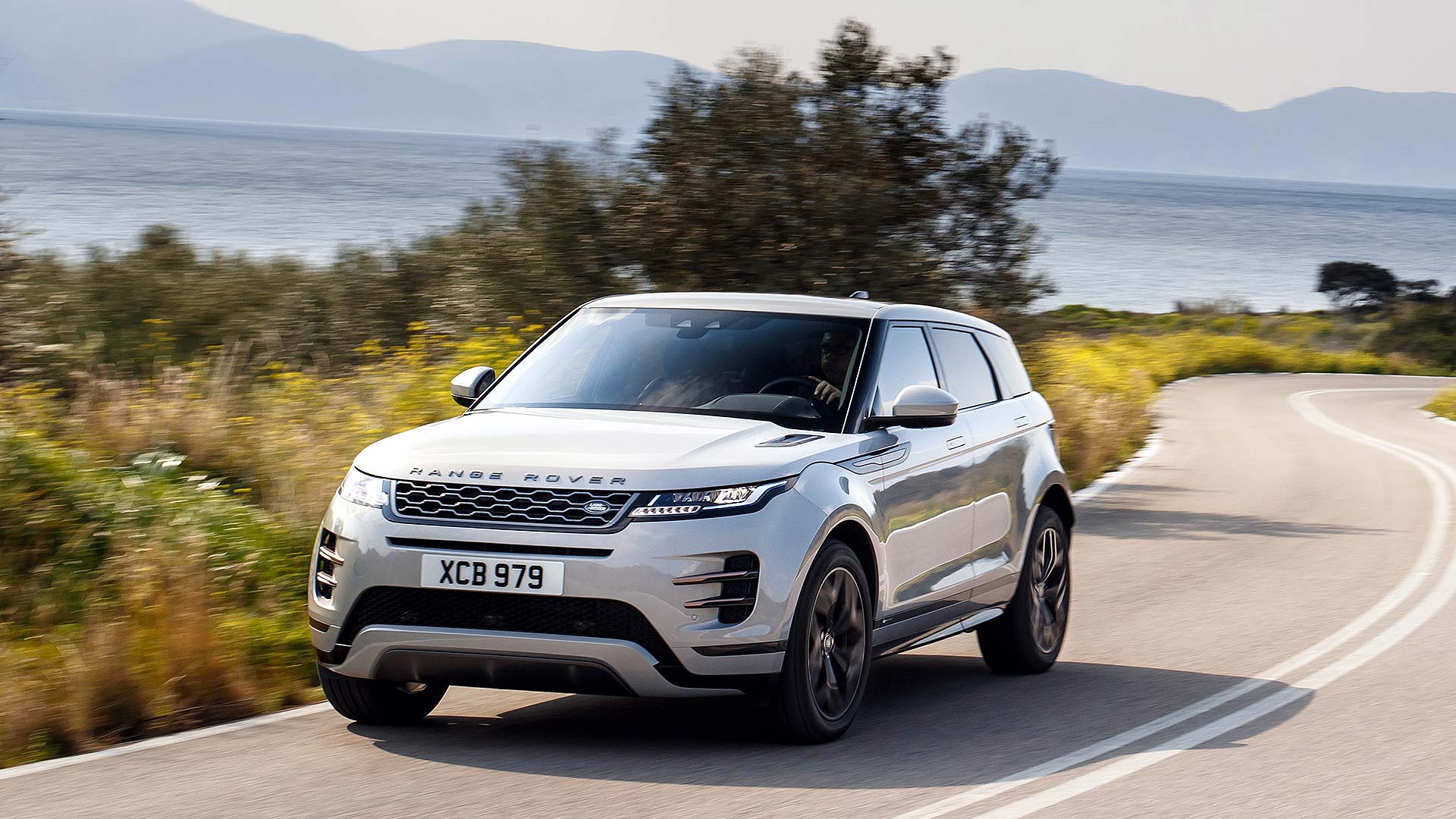
The 240 horsepower D240 diesel is, surprisingly, more settled. It doesn’t need the frenetic revving of the petrol to stop the Evoque feeling leaden, and it sounds a quieter and more at ease when you do (it has more pulling power to disguise the Evoque’s weight as well). Like the petrol, it’s admirably free from vibration, and the gruff clatter of earlier Ingenium diesel engines has been lessened. We hope the 150hp and 180hp alternatives are as well-rounded.
Both diesel and petrol move up through the gearbox with satisfying smoothness. One gear blurs into the next. It’s the initial downshift that can jar a bit. On twisting roads, we shifted to sport mode, to block out taller gears and the hiccup whenever we pressed harder on the accelerator.
FAST FACTS: Range Rover Evoque D240 AWD Auto
- 0-62mph: 7.7 seconds
- Top speed: 140 mph
- Fuel economy: 45.6 mpg
- CO2: 163 g/km
Rolling down the road

The Evoque isn’t a sports car. Jaguar has its E-Pace for those who want handling like a hot hatchback. It leans more in corners, and the front end will softly push wide with a little squeal if you do go chasing sports cars.
It still handles nicely, though. The steering is well-weighted and precise, the longer wheelbase gives a confident feel and it’s a viceless and natural car for a gentle bit of back-road enjoyment. For even more fun, do what few will ever do, and take it off road…
Off-roading
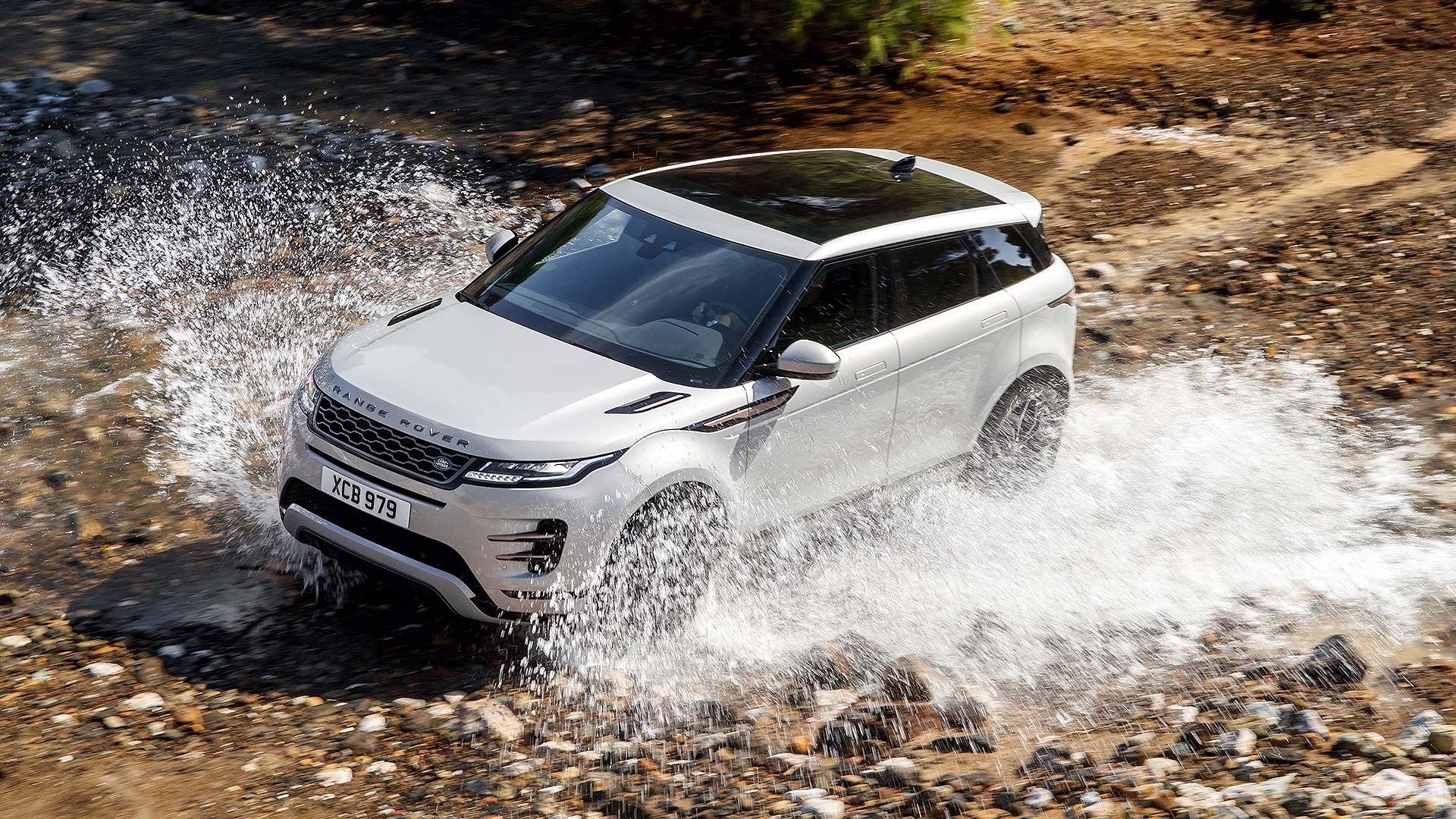
The Evoque has an extraordinary arsenal of ability off-road, going into far deeper and more extreme terrain than you would ever believe. We waded it through water, crawled rocks, drove up and down mountain sides. It handled it all without skipping a beat.
It was, again, extremely comfortable. Off-road ride is lovely and supple, and features such as Terrain Response 2 took all the guesswork out of which drive mode to select. If you’re not confident, you can even press a button called All Terrain Progress Control and let ‘off-road cruise control’ do all the hard work: you simply steer. Like the other off-road tech, it’s standard on every Evoque fitted with an automatic gearbox.
Refinement
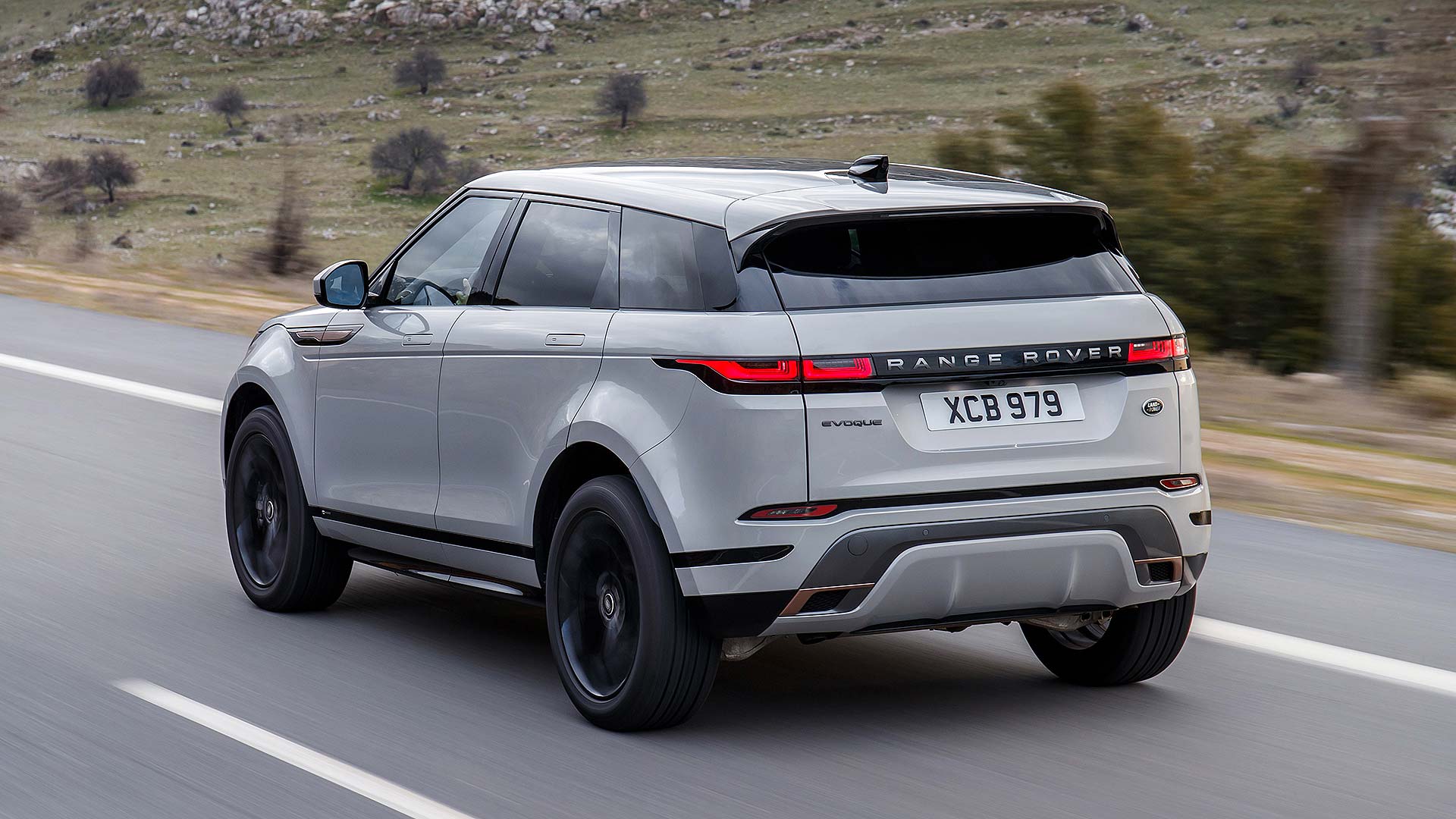
The new Evoque has more Range Rover-like refinement. Aside from the aforementioned engine thrash, and a touch of wind noise from the door mirrors at speed, it’s quieter and more peaceful, and feels more luxurious as a result. There isn’t even much noise from the suspension, no matter how busy it is in dealing with grotty road surfaces.
It also feels pleasingly confident and stable at speed. It’s planted, doesn’t demand constant little steering corrections and the gentle corners can be steered with small inputs from your wrists. It allows drivers to relax. This also ups the luxury factor.
Prices and specs
We can’t imagine the basic front-wheel drive D150 manual proving popular. So the entry-level Evoque is thus the D150 AWD auto, at £35,100. And if you’re going for that, best go instead for the D180 AWD auto, at £35,850. Petrol prices start from £35,950 for a P200 AWD auto.
The Evoque is sold in standard, S (£3,150 more), SE (£3,500 over S,) HSE (£3,000 over SE) and ultra-posh First Edition guise (it starts from almost £50,000). Each, apart from the launch First Edition, offer the R-Dynamic sports spec upgrade for £1,500.
The base model is a bit light on spec (not even navigation, Android Auto or Apple Carplay) and only SE and above get the Touch Pro Duo twin-screen interior. That’s the one we’d go for, then.
Verdict: 2019 Range Rover Evoque
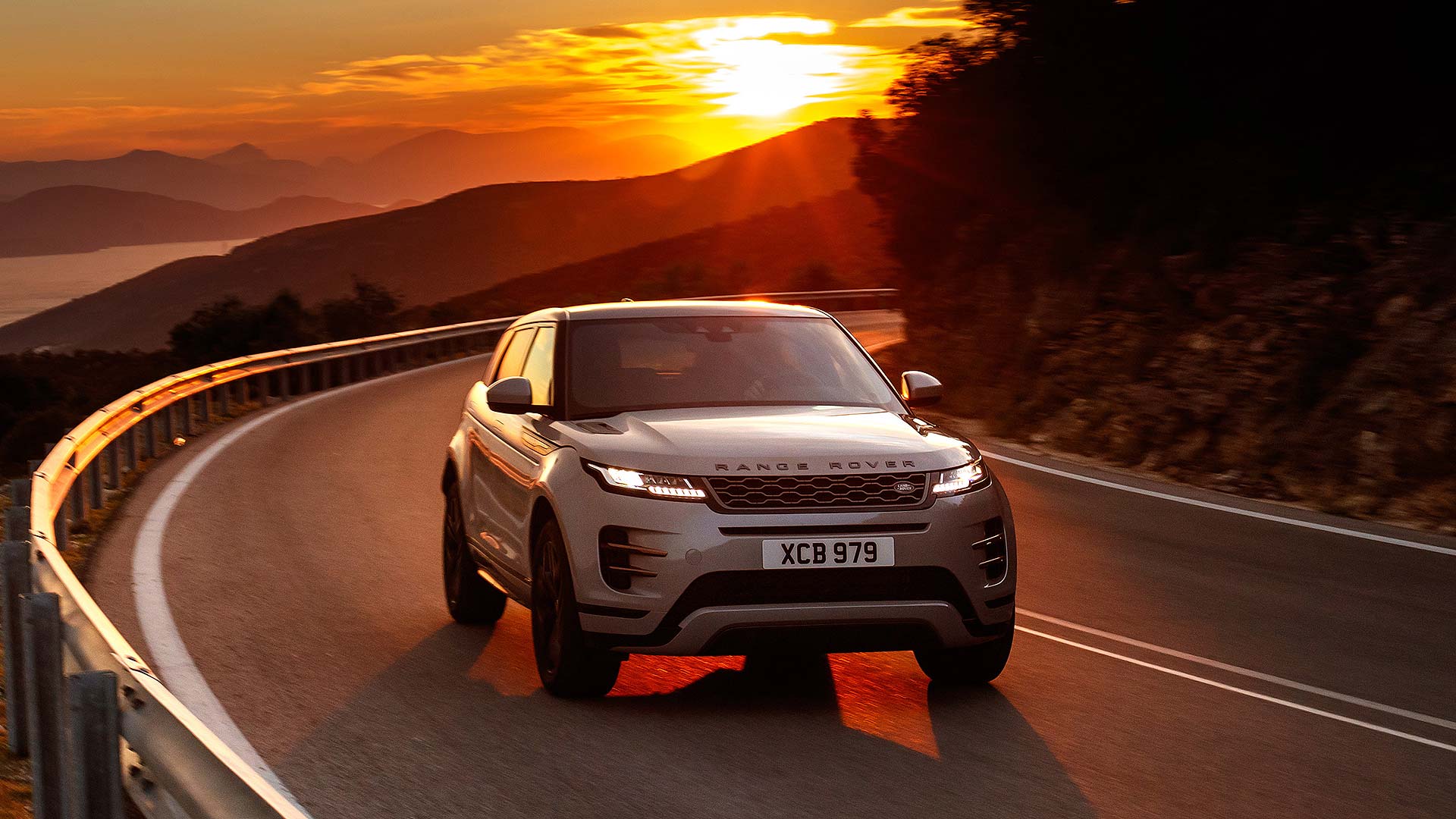
Land Rover has made the new Evoque more of a genuine Range Rover. It now has the same sort of luxury and feel-good quality of bigger models – the class and design modernism of a Velar, brought down a sector. Ride quality is outstanding, it drives with more confident composure and is a lovely place to simply sit within.
The petrol engine needs more soundproofing. The gearbox still isn’t perfect. Improvements in interior space won’t be enough for some. And the Evoque you really want isn’t as affordable as entry-level prices will have you believe. But these gripes shouldn’t overshadow what a welcome step on in premium sophistication the new model is. And what an even more desirable machine it is as a result.
Like the original. Only better. Just as the customer ordered. Let’s watch the orders flood in.
2019 Range Rover specs
- Prices: From £31,600
- Dimensions: 4,371 / 1,904 / 1,649 mm
- Boot space: 591 / 1,383 litres
- Petrol engines: P200, P250, P300
- Diesel engines: D150, D180, D240
- Variants: Base, S, S R-Dynamic, SE, SE R-Dynamic, HSE, HSE R-Dynamic, First Edition